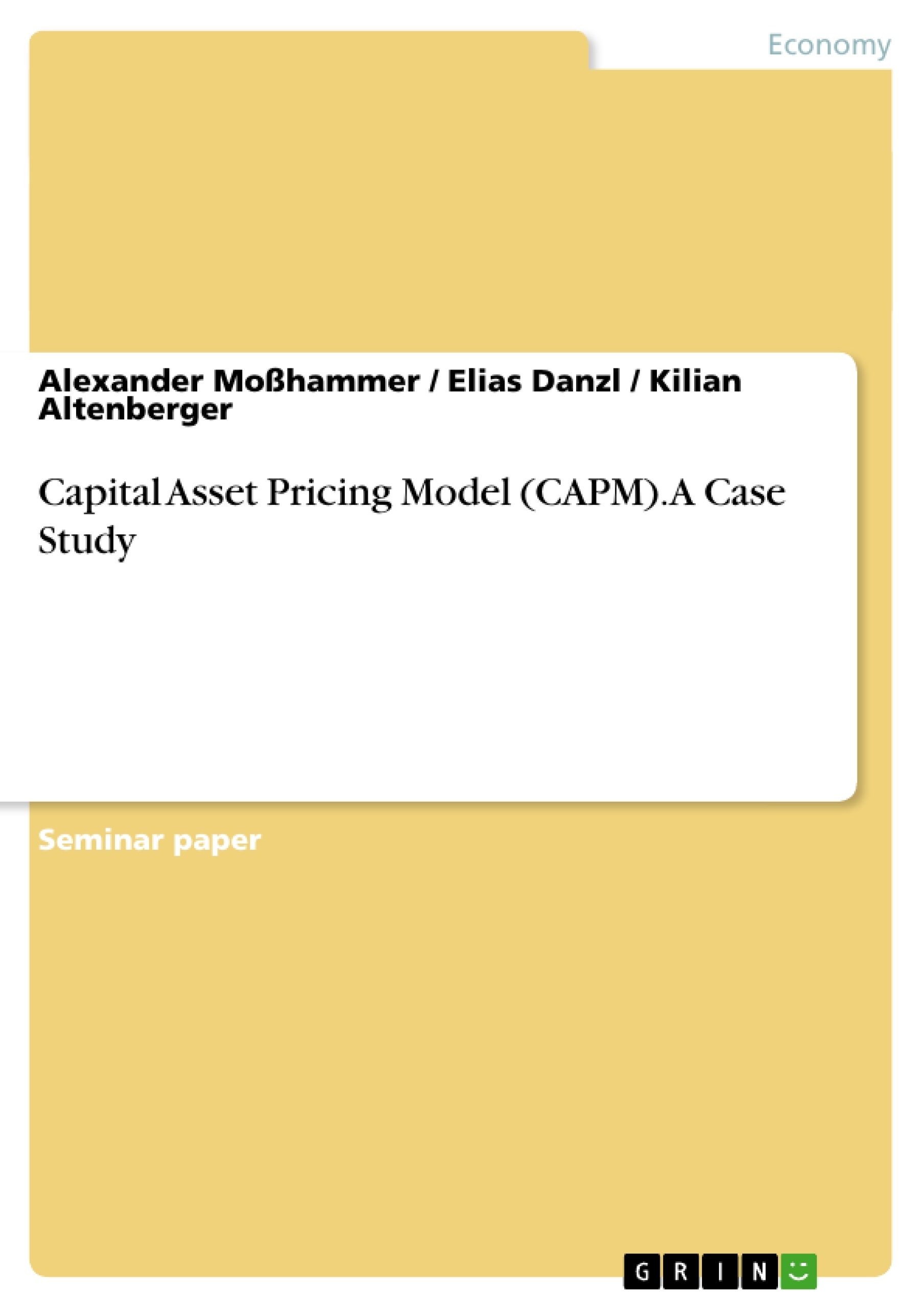The purpose of this paper is to do empirical research on the capital asset pricing model. The bases of our research are the returns of three stocks, the S&P 500 index which represents the market and the LIBOR as a proxy for the risk-free interest rate. The three companies that were chosen in this paper were Kellogg Company, KB Financial Group Inc. and Kate Spade & Company and all of them in combination represent our fictive market.
Inhaltsverzeichnis (Table of Contents)
- Introduction
- Basic figures of the firms
- Statistical moments of stock market returns
- The minimum variance portfolio
- The tangential portfolio
- Turn-of-the-month anomaly
- References
Zielsetzung und Themenschwerpunkte (Objectives and Key Themes)
The paper aims to conduct empirical research on the capital asset pricing model using the returns of three stocks, the S&P 500 index, and the LIBOR as a proxy for the risk-free interest rate.
- Analysis of key statistical moments of stock market returns
- Construction and evaluation of the minimum variance portfolio
- Examination of the turn-of-the-month anomaly
- Application of the capital asset pricing model in a fictive market
- Assessment of the risk and return characteristics of different portfolios
Zusammenfassung der Kapitel (Chapter Summaries)
- Introduction: Provides an overview of the research objectives, the chosen companies, and the rationale for using the LIBOR as a proxy for the risk-free interest rate.
- Basic figures of the firms: Analyzes key financial statistics of the selected companies, including market capitalization, book value, earnings per share, return on equity, P/E ratio, dividend yield, and growth rate. This section presents a comparative analysis of the financial performance of Kellogg Company, KB Financial Group Inc., and Kate Spade & Company.
- Statistical moments of stock market returns: Explores the monthly returns of the three stocks, the S&P 500 index, and their statistical properties, including mean returns, variances, standard deviations, covariance, and correlation coefficients. This section also delves into the concept of beta and its significance in measuring systematic risk.
- The minimum variance portfolio: Introduces the concept of the minimum variance portfolio (MVP) and its importance in portfolio optimization. The chapter discusses the characteristics of the MVP and its relationship to other portfolio combinations.
Schlüsselwörter (Keywords)
The paper focuses on the Capital Asset Pricing Model (CAPM), financial statistics, stock market returns, risk and return, portfolio optimization, minimum variance portfolio, beta, systematic risk, unsystematic risk, and the turn-of-the-month anomaly.
- Quote paper
- Alexander Moßhammer (Author), Elias Danzl (Author), Kilian Altenberger (Author), 2015, Capital Asset Pricing Model (CAPM). A Case Study, Munich, GRIN Verlag, https://www.grin.com/document/288267




